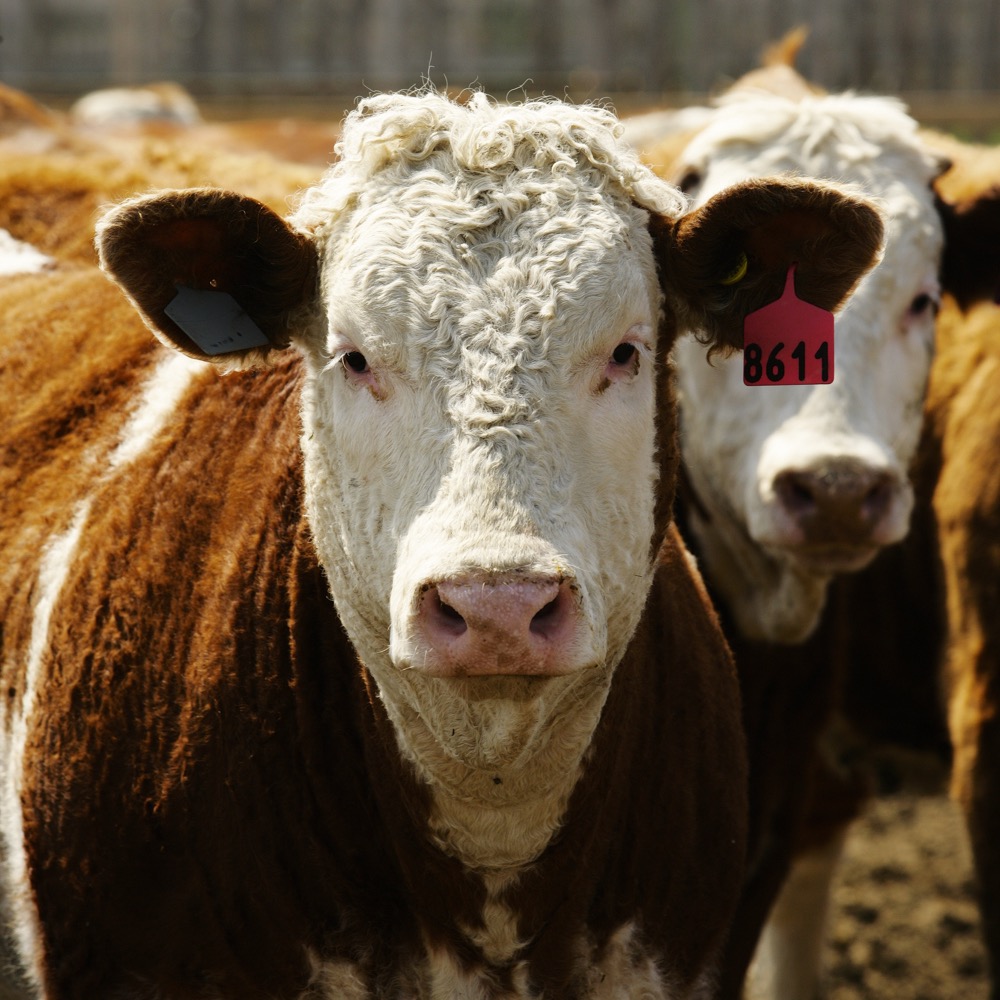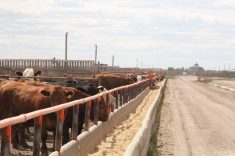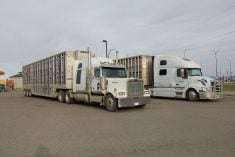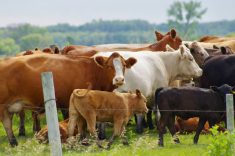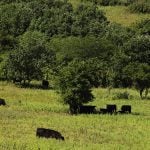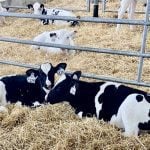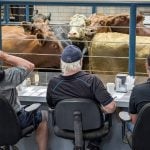August’s column talked about how genetic selection for growth rate and carcass merit has resulted in heavier carcasses with better marbling scores. New genetics get to the feeder and packer through the bulls that cow-calf producers buy from seedstock producers. These new genetics also leave fingerprints on the cow herd as they pass through. If you retain your own replacement heifers, 87.5 per cent of the genetics in your cow herd result from the last three “generations” of herd bulls you’ve introduced.
The same genes that make feeder cattle grow faster and larger also turn replacement heifers into larger cows. Canfax data shows that cow carcass weights have increased by 4.3 lb. per year since 1960. After correcting for dressing percentage (50.75 per cent), these roughly equate to live weights of 945 lb. in 1960 and 1,450 lb. today. That’s a 53 per cent increase. Canadian breed association genetic trends for mature weight point in the same direction, confirming that genetic change is contributing to this.
You may not have noticed your own cows gradually getting larger unless you measure and track cow weights, or if you only notice the size of the cull cow cheque but not the sale weights. But chances are, your cows have gotten bigger too.
Read Also
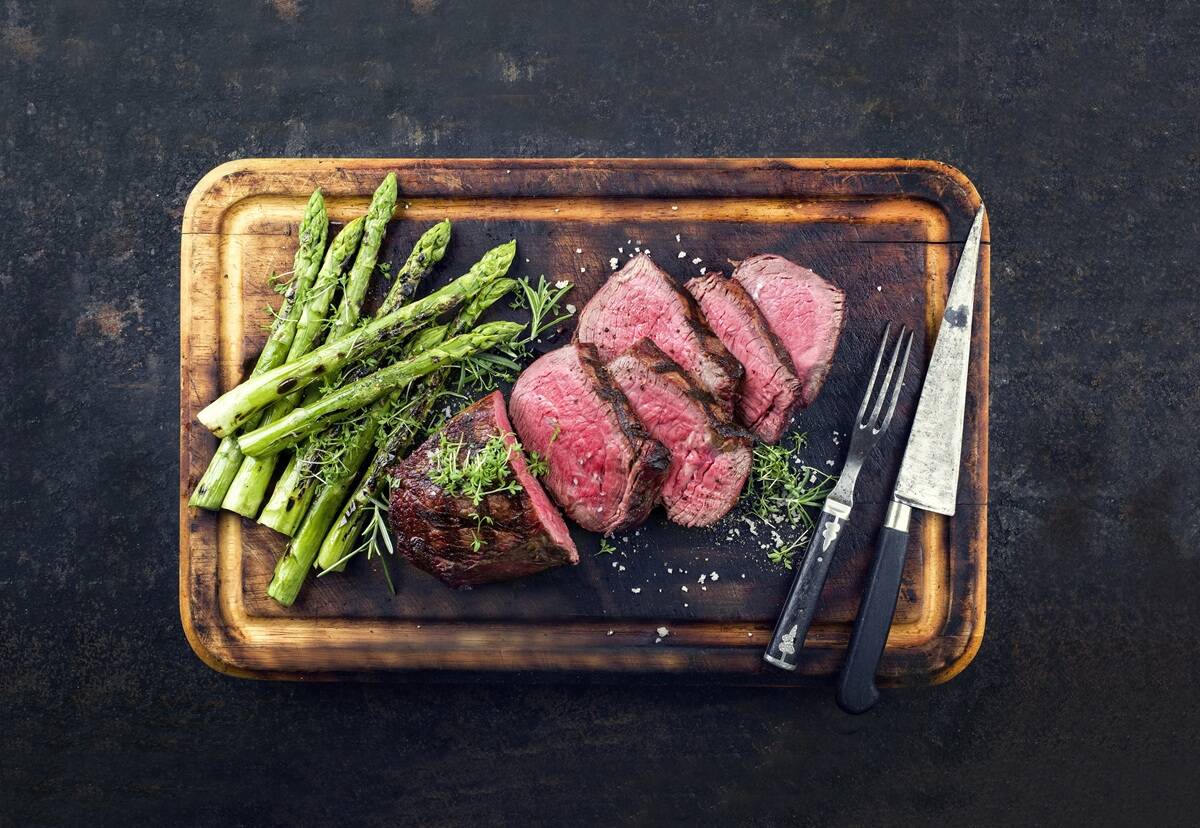
Building demand together: The impact of Canada’s beef import levy
The beef import levy has become a central tool for ensuring balance in Canada’s beef industry
The big question is, are big cows a problem?
Some contend that smaller cows are more efficient. They need less feed (so the same number of acres can pasture more cows) and wean calves that are a higher percentage of their body weight. In contrast, large cows need more feed, more pasture and wean calves that are smaller relative to cow size. Let’s take each of those in turn.
Feed requirements: Larger cows certainly need more fuel to maintain their weight and body condition than smaller cows. But it’s not a 1:1 increase. On a pound-for-pound body weight basis, larger animals need proportionally less energy to maintain themselves than smaller animals. So, while today’s cows may weigh 53 per cent more than the 1960 model, they only need 38 per cent more feed energy. At the end of the day, the same feed and land resources that supported 100 cows in 1960 might support about 73 cows today. But the animal unit month (AUM) used to determine pasture stocking rates and carrying capacity is still based on a 1,000-lb. animal. If your cows have gotten bigger, but you’re still pasturing the same number of cows per acre, they may be nutritionally shortchanged, unable to maintain body condition, rebreeding later or not at all, and dropping out of the herd sooner.
Weaning weights: Larger cows raise larger calves, but a 50 per cent increase in cow weight doesn’t mean a 50 per cent increase in weaning weight. If you still had 945-lb. cows that weaned 410-lb. calves (43 per cent of cow weight) selling for $4.60/lb. at today’s prices, their calf crop would generate $8,000 more revenue than 73 larger cows weaning 630-lb. calves (also 43 per cent) selling for $3.90/lb. The larger cows would have to wean 660-lb. calves (46 per cent of cow weight) to gross the same as the smaller cows. But if genetics, a late calving season or poor pasture conditions meant the 73 large cows only weaned 477-lb. calves (33 per cent of cow weight), they could gross $25,000 less than 100 smaller cows.
Are small cows better? Cows weaning a high percentage of their body weight aren’t necessarily more efficient. They probably milk very heavily. This significantly increases their feed requirements, and makes it more difficult to maintain body condition, maintain a 365-day calving interval (or rebreed at all), and stay in the herd long enough to pay for their development costs.
Yesterday’s smaller cows did not guarantee reproductive success, either. Dr. Eugene Janzen studied this in 166 herds across Western Canada in the fall of 1975 (Some observations on reproductive performance in beef cattle in Western Canada; PMC1789442). Pregnancy rates averaged 86 per cent and ranged from below 60 per cent to over 95 per cent. In a smaller study of 15 herds around Vegreville, Alta., the previous year, Janzen found pregnancy rates averaging 70 per cent (Reproductive performance of beef cattle in northeastern Alberta; PMC1697146). Herds reporting 81-92 per cent pregnancy rates had much better nutritional management than herds with 38-66 per cent pregnancy rates.
Pasture and feed management need to meet the cow’s nutritional requirements, regardless of size. The most recent Canadian Cow-Calf Survey reported that pregnancy rates averaged 92.2 per cent in Alberta (92.6 per cent nationally) in the fall of 2022, suggesting that management is keeping pace with the nutritional demands of today’s larger cows.
Bottom line: Big cows aren’t necessarily bad, but they don’t work for everyone. If your cows are weaning healthy, good-sized calves, maintaining a 365-day calving interval and staying in the herd long enough to make a profit, they’re probably right-sized for your operation. If they’re coming back open before they’ve paid for themselves, they may be too large for your operation’s resources and management style to support.
So what does this mean to you? Identifying the ideal cow for your operation — and the bull-buying decisions that will help you get or stay there — starts with good records. Good records are key to good management and culling decisions. Buying bulls can be complicated. All the numbers and EPDs and ratios and indexes lead some producers to throw up their hands and rely on their eyeballs. Looks (frame, capacity, conformation, udder) are important, but they only tell you so much — cows wear their efficiency genes on the inside. The BCRC has developed a genetic record-keeping course that can help simplify and demystify the process. You can learn more at beefresearch.ca/blog/courses/.
The Beef Cattle Research Council is a not-for-profit industry organization funded by the Canadian Beef Cattle Check-Off. The BCRC partners with Agriculture and Agri-Food Canada, provincial beef industry groups and governments to advance research and technology transfer supporting the Canadian beef industry’s vision to be recognized as a preferred supplier of healthy, high-quality beef, cattle and genetics. Learn more about the BCRC at beefresearch.ca.


